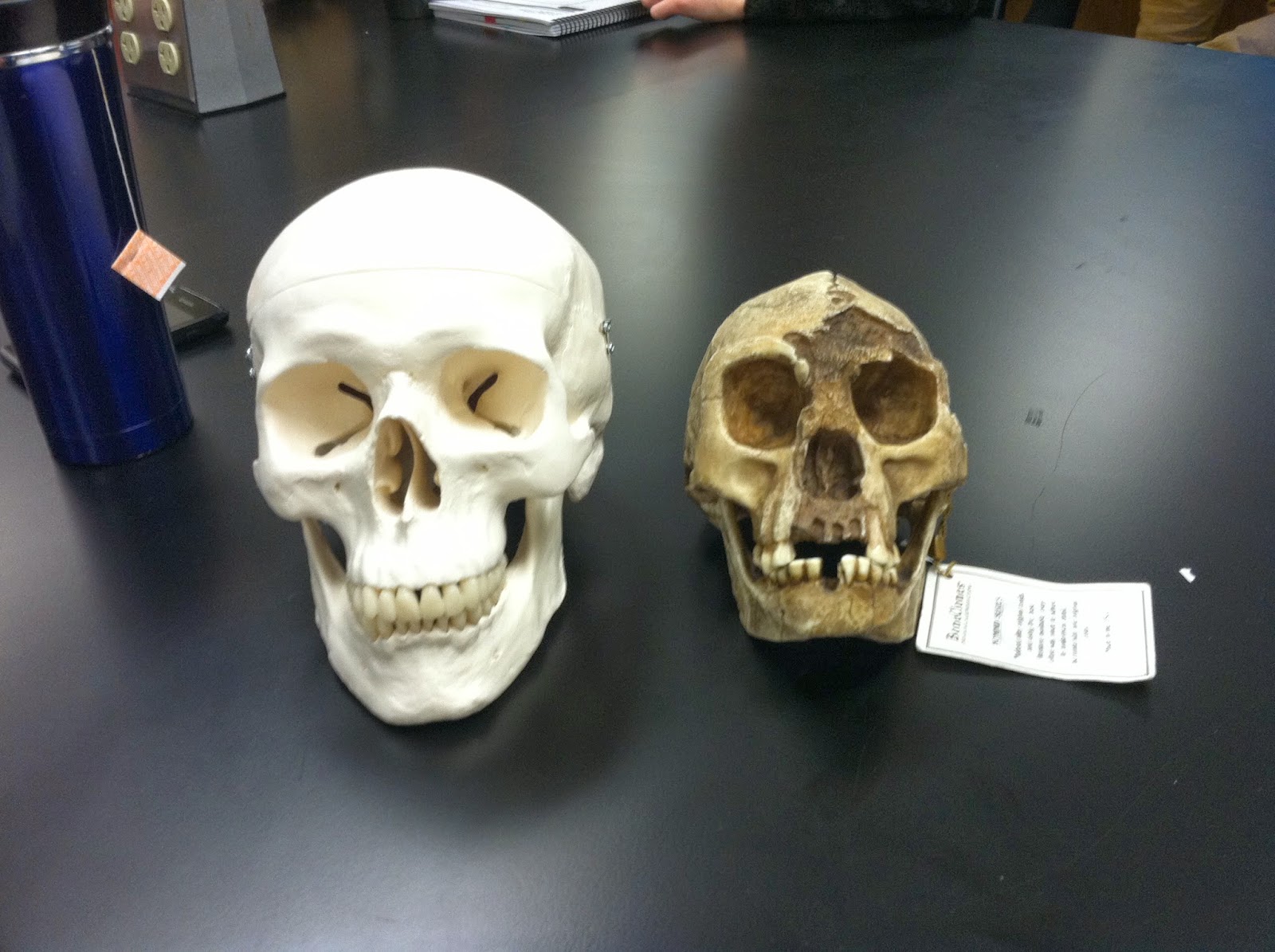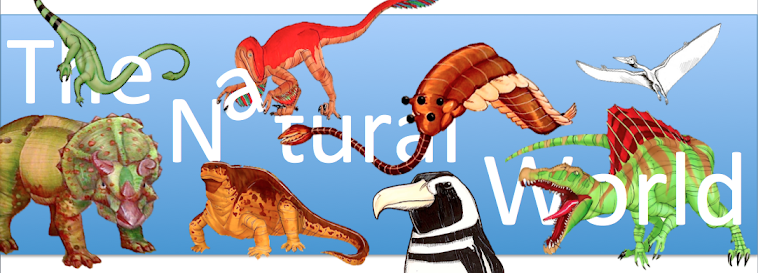 |
| A size comparison of the brave little Hobbit, the dwarf elephant Stegodon, the Komodo dragon, and the giant stork Leptoptilos robustus, drawn by the illustrious illustrator Zach Evens! |
If you aren't already familiar with island dwarfism, here's a brief summary. Oftentimes, populations of animals will become trapped on islands. Over deep time, they can either evolve and adapt....or die. On islands, what was beneficial on the mainland might not be quite as useful on a smaller, isolated chunk of land. For example, if you are a larger animal, you are going to need more food than a smaller animal. On the mainland, where food can be found in relative abundance, this usually isn't as much of an issue. Furthermore, being large helps ward off predators, and can increase the likelihood of passing off your genes to subsequent generations. So for some mainland animals, it pays to be bigger.
Now slow down and grab on to something solid. Imagine a group of elephants becomes isolated from the mainland, and trapped on an island with limited food supply and other resources. Now all of a sudden, its the larger elephants that are dying off, starving to death. The biggest of the bunch are unable to find enough food for their regular breakfast (not to mention second breakfast or elevenses), and unable to pass on their genes. Suddenly, being small is looking pretty good! Furthermore, if the island that these elephants are trapped on has geographical features that ensure mainland predators shall not pass onto the island, then the smaller elephants aren't being removed from the gene pool by predators. If you hit the gas pedal and speed up a few thousand years or so, you might get a population of cute little pint-sized elephants. Which, as we have talked about before, does indeed happen, and has happened numerous times throughout history.
So there's island dwarfism in a cute little nutshell. This tiny little idea pertains to the island of Flores in a big way, as it potentially miniaturized a member of the human family tree! Meet Homo floresiensis, nicknamed "the Hobbit" by its discoverers! At only three and a half feet tall, this little guy would almost certainly be wasted at cross-country! Initially announced in 2004, the discovery of at least six individuals of this cute little member of the human family tree have shown that this proto-human was not simply a genetic anomaly of this properly proportioned Pleistocene populace, but instead a participant in this posse of pint-sized people.
 |
| One small brained individual contemplates another. The smaller skull is a cast of the skull of Homo floresiensis. Photo Credit: Zach Evens |
Other scientists believe that there is more to this hobbit than meets the eye. Not everything matches terribly well with the "Insular Dwarfing of Homo erectus as an Explanation Regarding the Small Stature of Homo Floresiensis" hypothesis. In proportion to the rest of the body, the brain does not typically dwarf nearly as much when it comes to island dwarfism. However, the Hobbit's brain size did seem to decrease dramatically, a phenomenon not typically seen in island dwarfs, with the possible exceptions of the Myotragus cave goat and the Malagasy hippo Hippopotamus lemerlei. Therefore, some scientists hypothesize that H. floresiensis is not actually a dwarf at all, but was instead a "living fossil," an informal term used to describe animals whose closest relatives are all extinct.* In this other scenario, scientists suspect that H. floresiensis shouldn't even belong to the genus Homo, and instead is a descendant of Australopithecus, another genus of ancestral human, members of which are thought to have survived as recently as two million years ago. If H. floresiensis was instead a living fossil, then an island might be the perfect place for this brave little halfling to find refuge.
Besides dwarfism, islands can also serve as evolutionary holdout areas for animals that might not have been able to compete with other species on the mainland. An excellent example of this is a member of the reptilian sphenodonts, lizard-like animals who can trace their evolutionary origins past that of lizards and snakes, all the way back to the Late Triassic Period, when dinosaurs were first evolving. Today, the only place where you can find a living sphenodont, known colloquially as the tuatara, is on a number of small islands off the coast of New Zealand. For whatever reason, this fascinating primitive reptile was unable to keep up with the rapid pace of evolution on the mainland, and found island life to be more its speed. Unfortunately, introduced animals such as rats carry the potential to exterminate the tuatara within our lifetime. With nowhere to go when the going gets tough, islands can be very dangerous places indeed.
Several lines of evidence support the idea of H. floresiensis actually being a descendant of Australopithecus, including morphological characteristics of the teeth and mandible, as well as the small brain size mentioned before. A third hypothesis has been created to explain away the small size of this early human, which pertains to pathological conditions such as microcephaly, Laron Syndrome, and myxoedematous endemic hypothyroidism. To read more about the support for and against these pathological conditions in regards to H. floresiensis, you can click HERE: this post goes ever on and on, and we still have a lot more ground to cover. Besides, is it not strange that we should suffer so much fear and doubt over so small a being? Such a little being.
 |
| A quality pic that shows a modern human skull on the left, and the skull of the Hobbit on the right. |
You know what else would have been easier? If Frodo had taken an eagle and flown over Mt. Doom, and dropped the Ring into the volcano.** It would be a little TOO convenient for there to be a giant eagle that lived on the island of Flores and, unfortunately, this time you are correct. There was, however, a gigantic relative of the modern day Marabou stork, Leptoptilos robustus, which measured in at an enormous 6 feet tall! Since it was so large, some scientists suspect that this fool would not have been doing much flying. Instead, this gigantic stork is thought to have stalked the Pleistocene landscape of Flores, living a primarily terrestrial lifestyle, most likely due to a lack of mammalian predators. Kind of the opposite of island dwarfism: instead of big animals getting smaller, its small animals getting bigger! Boy, that sure would suck if that gigantism happened to something gross like rats, wouldn't it?
So we've got hobbits. We've got elephants. We've even got giant birds. Is there anything we're missing? Sure there is: dragons. Although there weren't any fire breathing dragons on Flores during the Pleistocene, there was a gigantic lizard that prowled the landscape! Meet the Komodo dragon which, as luck would have it, is actually still alive today! At ten feet long and weighing several hundred pounds, the Komodo dragon is the heaviest lizard alive today, and will take humans as prey if given the opportunity. As a matter of fact, there has even been some speculation that the Komodo dragon evolved so large in order to hunt the dwarf Stegodon that also made their home on the island, but as far as I know this is simply speculation.
Obviously, there is still a great deal that we need to learn about this ancient ecosystem, as well as about the individual species that were a part of said ecosystem. Preciouusssssss fossils can be very difficult to find: unlike other inanimate objects, fossils don't really care one way or another if they are found by anyone, and just kind of sit there. With any luck, in the coming years, paleontologists might discover evidence of humongous Floresian spiders, giant wolves, or intelligent trees. Or maybe even elves. Whatever the future holds, you can rest assured that I will be there to report on the new findings. You have my word.
And my bow.
And my axe.
*Here on the blog, we've talked about animals such as the coelacanth and the horseshoe crab, both of whom are often referred to as living fossils. In this context, I'm using the term loosely, as H. floresiensis is no longer alive today. Instead, I am referring to the fact that at the time H. floresiensis was alive, it might have been considered a living fossil.
**If that didn't ruin that movie for you, keep in mind that Indiana Jones is irrelevant to the outcome of Raiders of the Lost Ark, and that Luke and Leia are siblings and made out.
Works Cited:
